Dual coding: A teacher's guide
Boost student learning with Dual Coding. Discover how combining words and visuals enhances memory, reduces overload, and improves comprehension.


Boost student learning with Dual Coding. Discover how combining words and visuals enhances memory, reduces overload, and improves comprehension.
Dual Coding is a research-backed learning strategy that enhances student understanding by combining verbal and visual information. In 2025, this approach remains one of the most effective evidence-informed strategies available to teachers. By presenting concepts in both words and images, students process information through two cognitive channels – verbal and non-verbal – improving their ability to retain and recall key ideas.
Cognitive psychologists have identified six highly effective learning strategies for improving long-term memory, and Dual Coding is one of them. This approach is based on the idea that when students see and hear information simultaneously, they've got two ways to encode knowledge, making it easier to retrieve later.
Key benefits of Dual Coding include:
Teachers can implement Dual Coding through a variety of visual formats, including:
With the rise of evidence-informed teaching, outdated concepts like learning styles are being replaced by strategies grounded in cognitive science. Institutions such as the Education Endowment Foundation (EEF) have highlighted Dual Coding as an effective way to enhance student learning, making it a valuable tool for modern classroom practice.
By integrating visual and verbal elements, teachers can ensure that students process information more deeply, efficiently, and effectively, leading to stronger comprehension and long-term retention.
The dual-coding teaching strategy finds its roots in Allan Paivio's Dual-Coding Theory and cognitive load theory. This approach aims to reduce cognitive overload in learners by utilising both visuospatial sketchpads and phonological loops for presenting complex concepts, effectively boosting memory capacity and understanding.
Allan Paivio (1971) proposed that individuals process visual and verbal information individually and at the same time. This is a human cognition theory which claims that combining both verbal material and visuals is a useful learning technique.
According to the Dual-Coding Theory, if a teacher shares visual and verbal explanations simultaneously, students are more likely to process the knowledge and retain it more effectively.
The educational phenomena of Dual coding is based on scientific evidence. It's different from learning styles, which deals with students deciding how they believe they learn best. Dual coding primarily relates to how the brain processes information.

The Working Memory Model of Alan Baddeley also supports the concept of complementary audio and visual processing routes inside the brain to benefit detailed memories.
The Dual-Coding Theory posits that the human mind processes information through separate systems: one for visual stimuli and another for verbal stimuli. By simultaneously engaging both systems, learners can better grasp and retain complex concepts. This idea aligns with human cognition theory, which emphasises the importance of minimising cognitive overload when performing cognitive tasks.
Scientific evidence supports the benefits of dual coding in education. Studies show that combining visual aids, such as diagrams, graphs, or illustrations, with verbal explanations enhances learners' ability to understand and remember information. This process not only reduces cognitive overload but also helps learners make connections between different pieces of information, leading to a more profound comprehension of the subject matter.
In summary, dual coding leverages the strengths of both visual and verbal processing systems in the human mind, minimising cognitive overload and maximising memory capacity. By incorporating dual coding strategies in their classrooms, teachers can help students more effectively navigate cognitive tasks and achieve a deeper understanding of complex concepts.
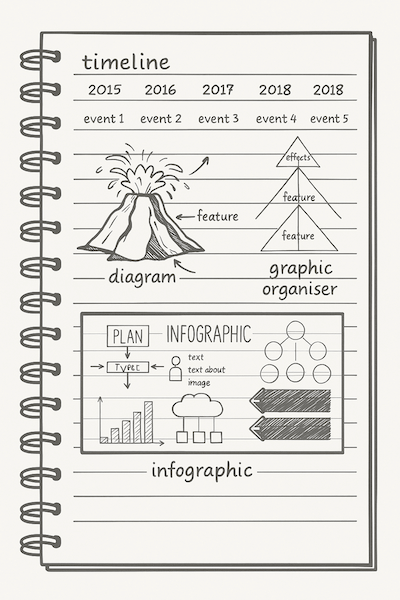
Integrating Dual Coding into classroom instruction helps students process information more effectively by reinforcing concepts through both words and visuals. When teachers combine spoken explanations with relevant drawings, diagrams, or graphic organisers, students are more likely to understand and retain information.
Here's a step-by-step guide to using Dual Coding in the classroom:
1. Identify and Analyse Visuals
Encourage students to find visuals in their course materials (e.g., diagrams, infographics, timelines).
Ask them to analyse how the words explain the visuals, focusing on what key details are emphasised.
2. Reverse the Process
Now, have students do the opposite: examine the images and determine how they visually represent the written text.
This reinforces the connection between visual and verbal information, strengthening memory recall.

3. Describe in Their Own Words
Ask students to explain the concept in their own words, summarising the key ideas from both the text and the visuals.
This encourages active processing, rather than passive viewing.
4. Create Their Own Visual Representations
Once students understand the information, have them draw a diagram, sketch, or graphic organiser to visually represent it.
This step is crucial for deep learning, as it requires them to transform abstract information into a meaningful structure.
By engaging in these activities, students internalise knowledge in multiple ways, making it easier to retrieve later. Dual Coding isn't just about adding visuals; it's about teaching students to think visually and use both modes of representation to enhance comprehension.

When students are looking over their class materials, they must find pictures that complement the information and correlate the pictures to the words. Students need to check: how do these words explain what's present in the pictures? How do the representative images depict what's given in the text?
There are specific kinds of visuals that go very well with specific kinds of materials. For instance, a diagram may help very well with concepts of biology and a timeline may do very well to remember history. Students must show creativity while drawing the visual materials. They don't have to reproduce the same visuals they've seen in their class materials. However, the representative images must depict what they saw in words in their class materials.
After using the dual coding, students need to do the following:
After comparing words with the visual, students must explain the concept they're trying to learn. This is the time to retrieve the details on their own. Students must continue to practise until they reach a point where they can put away their class material and write their class material in words and draw visuals, representative images and other graphics according to the class material.
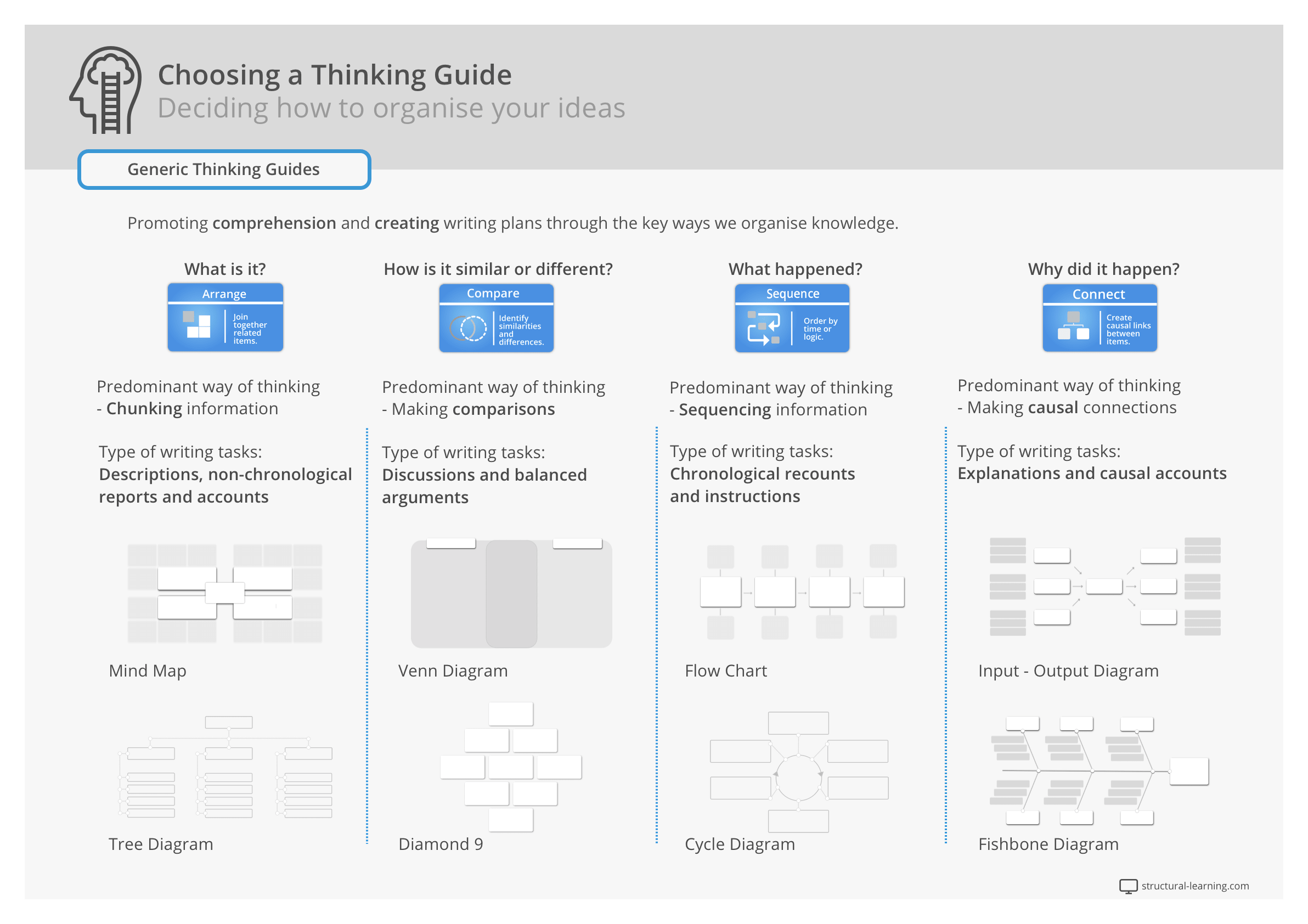
Embracing dual coding in today's technology-driven classrooms can greatly enhance students' comprehension of complex ideas and streamline the learning process. By effectively combining graphic principles with verbal input, teachers can create a more engaging and memorable educational experience for their students. Utilising technology not only allows for the seamless integration of visual and verbal components but also helps reduce teacher workload by offering a wide array of tools and resources that can be easily adapted to various educational settings.
For instance, teachers can use presentation software to create slides that incorporate both text and images, ensuring that students receive information through multiple channels. Online platforms and digital whiteboards enable real-time collaboration, allowing students to work together on projects that involve the creation and manipulation of visual elements alongside verbal explanations. Additionally, incorporating basic images, diagrams, or videos into lessons can help clarify difficult concepts and promote a deeper understanding.

Moreover, technology opens doors to a vast array of multimedia resources that can be used to support dual coding strategies. Educational videos, interactive simulations, and virtual reality experiences can offer students a more immersive and comprehensive learning experience, facilitating the connection between visual and verbal elements.
By leveraging technology to implement dual coding, teachers can create a more effective learning environment that caters to diverse learning needs and promotes a deeper understanding of complex ideas, ultimately supporting student success.
The effectiveness of digital technology can help the production and distribution of audio and visual resources. Therefore, interactive lessons and technology tools can significantly improve and enhance dual coding activities in many ways:

Cognitive Psychologists Clark and Paivio (1991) state that it's a common practice to teach students through discussion or asking them to read text. However, adding visual materials can make the information even clearer.
For instance, if a teacher says the word 'tree' to the students, when the students hear the word, they'll also create a mental image of what a tree looks like. Both word and visual images can be used to remember the information stored in the brain.
Cognitive Phenomena explain that a teacher's students try to remember everything said by the teacher in the classroom. However, our brains are created to only hold a small fraction of knowledge at one time. A lot of information delivered verbally is immediately forgotten. Dual coding enables students to remember a large amount of information. Following are some of the dual coding examples that can be used to teach students:
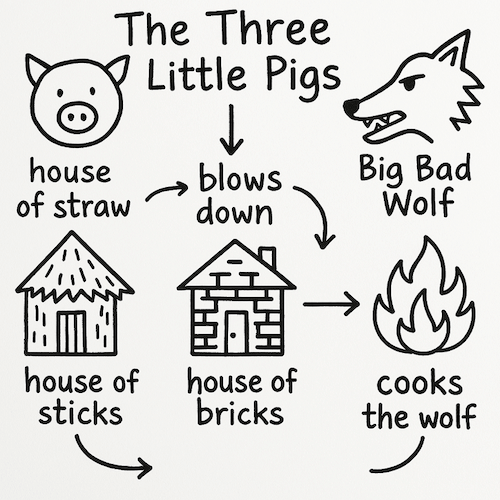
Many effective teachers are already using dual coding in their classrooms. For instance, while teaching history, many teachers create history timelines to help students remember important dates.
Also, an English Teacher must look at the lesson plan and make decisions about the key concept for the next class. It's always better to simplify the topic as much as possible.
Teachers need to select a visual representation supporting a particular concept. They must remove any unwanted background distractions and give students time to look at the visuals before starting to speak.
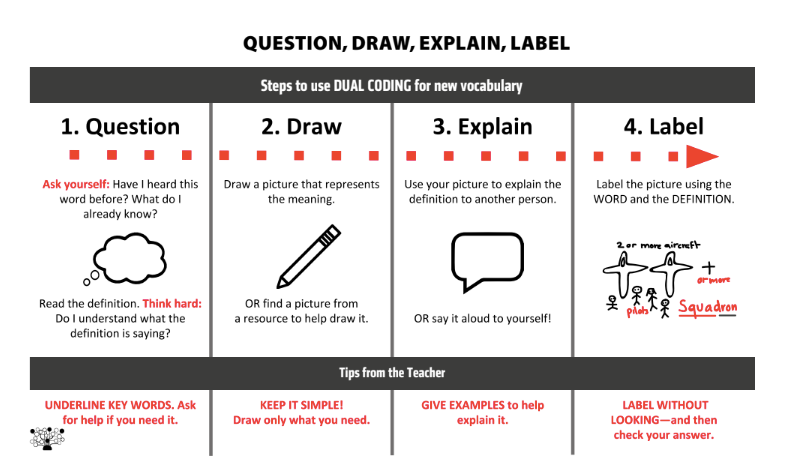
How to Create a Perfect Visual Representation
One may paste an image on a PowerPoint slide and call it dual coding. In reality, it isn't dual coding.
For Dual coding, the visual representations must be meaningful and must directly associate with the verbal material.
Photographs and videos are considered to be less effective in dual coding, as they hold too much background detail. According to the theories of Cognitive Science, these might make students overwhelmed. For dual coding, visual images should be very clear with little background information.
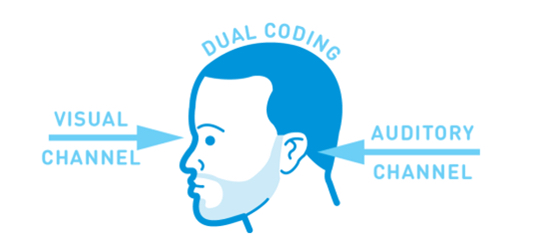
To be perfect for dual coding, visual images must be:
Students mustn't worry about their artistic skills. Dual coding with teachers is more about illustrating information clearly, not artistically. Teachers are suggested to encourage students to create and compare their visual representations with other students' representations. Extraordinary differences between the written text and the visual representations will put a mental workload on the students. Where possible, we must avoid:
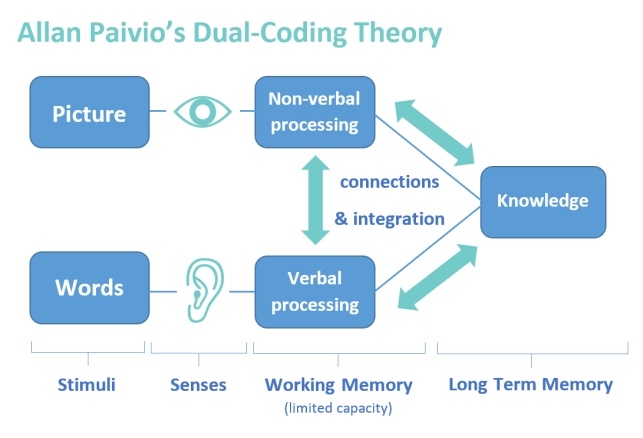
Dual coding isn't a new phenomenon. It has a huge impact on students' performance in memory, in associative processes, autophagy processes, linguistic processes, cognitive tasks, naming tasks and description tasks.
If it's applied properly, dual coding will improve students' retention of information and decrease the cognitive load while learning new concepts. If facilitated strategically, it won't add to the teacher workload; if anything, it might reduce it. Secondary school teachers are seeing the benefit as well. The pedagogy provides an accessible way into even the most complex of curriculum content. Using visuals alongside a well-crafted teacher explanation means that students have a greater chance of grasping the underlying concept.
It may take some time to find or create the perfect visuals, but you'll be amazed to see its impact. Use dual coding and take benefit from its application in learning. If you're interested in exploring a new theory of cognition, make sure you explore the universal thinking framework's webpage.

These studies collectively highlight the efficacy of dual coding in reducing cognitive load and enhancing learning outcomes through the use of verbal and visual channels, providing valuable insights for classroom practice and the development of effective learning strategies.
1. Cognitive load and learning effects of having students organise pictures and words in multimedia environments: The role of student interactivity and feedback (R. Moreno and Alfred Valdez, 2005)
Summary: This study shows that combining words and pictures (dual coding) in multimedia learning enhances retention and transfer, especially when learners evaluate their answers before receiving feedback, thus reducing cognitive load.
Outline: The document explores the benefits of dual-coding theory in multimedia learning environments, focusing on how organising pictures and words can facilitate learning by managing cognitive load and enhancing retrieval practice through interactivity and feedback mechanisms.
2. Nine Ways to Reduce Cognitive Load in Multimedia Learning (R. Mayer and R. Moreno, 2003)
Summary: This study outlines strategies to reduce cognitive load in multimedia learning, emphasising the dual-channel assumption where separate channels process pictorial and verbal material, leading to deeper learning and improved retention.
Outline: The document presents strategies derived from cognitive load theory and dual-coding theory to optimise multimedia instruction, enhancing learning techniques by effectively managing cognitive load through principles like modality and redundancy.

3. Aids to computer-based multimedia learning (R. Mayer and R. Moreno, 2002)
Summary: This research illustrates how multimedia learning combining words and pictures supports better understanding and retention by aligning with dual-coding theory and reducing extraneous cognitive load.
Outline: The paper discusses principles such as contiguity and coherence in multimedia learning, highlighting how dual coding helps create effective learning strategies that improve comprehension and retention by managing cognitive load and utilising graphic organisers.
4. Cognitive Architectures for Multimedia Learning (Stephen K. Reed, 2006)
Summary: This paper reviews cognitive architectures like dual-coding theory and cognitive load theory, emphasising their role in enhancing multimedia learning through the integration of multiple cognitive codes for better retention and understanding.
Outline: The document provides an overview of various cognitive architectures relevant to multimedia learning, explaining how these models support deeper learning and adaptive teaching by facilitating the integration of visual and verbal information.

5. Seven practical principles for improving patient education: Evidence-based ideas from cognition science (M. Pusic, Kevin Ching, H. S. Yin, and David Kessler, 2014)
Summary: This study applies dual coding and cognitive load theories to patient education, showing that using both verbal and visual channels improves information retention and understanding under time-pressured learning conditions.
Outline: The paper presents practical strategies for enhancing patient education by leveraging dual-coding theory, highlighting how separate channels for processing text and visuals can improve learning outcomes and retention through effective cognitive load management.
Dual Coding is a research-backed learning strategy that enhances student understanding by combining verbal and visual information. In 2025, this approach remains one of the most effective evidence-informed strategies available to teachers. By presenting concepts in both words and images, students process information through two cognitive channels – verbal and non-verbal – improving their ability to retain and recall key ideas.
Cognitive psychologists have identified six highly effective learning strategies for improving long-term memory, and Dual Coding is one of them. This approach is based on the idea that when students see and hear information simultaneously, they've got two ways to encode knowledge, making it easier to retrieve later.
Key benefits of Dual Coding include:
Teachers can implement Dual Coding through a variety of visual formats, including:
With the rise of evidence-informed teaching, outdated concepts like learning styles are being replaced by strategies grounded in cognitive science. Institutions such as the Education Endowment Foundation (EEF) have highlighted Dual Coding as an effective way to enhance student learning, making it a valuable tool for modern classroom practice.
By integrating visual and verbal elements, teachers can ensure that students process information more deeply, efficiently, and effectively, leading to stronger comprehension and long-term retention.
The dual-coding teaching strategy finds its roots in Allan Paivio's Dual-Coding Theory and cognitive load theory. This approach aims to reduce cognitive overload in learners by utilising both visuospatial sketchpads and phonological loops for presenting complex concepts, effectively boosting memory capacity and understanding.
Allan Paivio (1971) proposed that individuals process visual and verbal information individually and at the same time. This is a human cognition theory which claims that combining both verbal material and visuals is a useful learning technique.
According to the Dual-Coding Theory, if a teacher shares visual and verbal explanations simultaneously, students are more likely to process the knowledge and retain it more effectively.
The educational phenomena of Dual coding is based on scientific evidence. It's different from learning styles, which deals with students deciding how they believe they learn best. Dual coding primarily relates to how the brain processes information.

The Working Memory Model of Alan Baddeley also supports the concept of complementary audio and visual processing routes inside the brain to benefit detailed memories.
The Dual-Coding Theory posits that the human mind processes information through separate systems: one for visual stimuli and another for verbal stimuli. By simultaneously engaging both systems, learners can better grasp and retain complex concepts. This idea aligns with human cognition theory, which emphasises the importance of minimising cognitive overload when performing cognitive tasks.
Scientific evidence supports the benefits of dual coding in education. Studies show that combining visual aids, such as diagrams, graphs, or illustrations, with verbal explanations enhances learners' ability to understand and remember information. This process not only reduces cognitive overload but also helps learners make connections between different pieces of information, leading to a more profound comprehension of the subject matter.
In summary, dual coding leverages the strengths of both visual and verbal processing systems in the human mind, minimising cognitive overload and maximising memory capacity. By incorporating dual coding strategies in their classrooms, teachers can help students more effectively navigate cognitive tasks and achieve a deeper understanding of complex concepts.

Integrating Dual Coding into classroom instruction helps students process information more effectively by reinforcing concepts through both words and visuals. When teachers combine spoken explanations with relevant drawings, diagrams, or graphic organisers, students are more likely to understand and retain information.
Here's a step-by-step guide to using Dual Coding in the classroom:
1. Identify and Analyse Visuals
Encourage students to find visuals in their course materials (e.g., diagrams, infographics, timelines).
Ask them to analyse how the words explain the visuals, focusing on what key details are emphasised.
2. Reverse the Process
Now, have students do the opposite: examine the images and determine how they visually represent the written text.
This reinforces the connection between visual and verbal information, strengthening memory recall.

3. Describe in Their Own Words
Ask students to explain the concept in their own words, summarising the key ideas from both the text and the visuals.
This encourages active processing, rather than passive viewing.
4. Create Their Own Visual Representations
Once students understand the information, have them draw a diagram, sketch, or graphic organiser to visually represent it.
This step is crucial for deep learning, as it requires them to transform abstract information into a meaningful structure.
By engaging in these activities, students internalise knowledge in multiple ways, making it easier to retrieve later. Dual Coding isn't just about adding visuals; it's about teaching students to think visually and use both modes of representation to enhance comprehension.

When students are looking over their class materials, they must find pictures that complement the information and correlate the pictures to the words. Students need to check: how do these words explain what's present in the pictures? How do the representative images depict what's given in the text?
There are specific kinds of visuals that go very well with specific kinds of materials. For instance, a diagram may help very well with concepts of biology and a timeline may do very well to remember history. Students must show creativity while drawing the visual materials. They don't have to reproduce the same visuals they've seen in their class materials. However, the representative images must depict what they saw in words in their class materials.
After using the dual coding, students need to do the following:
After comparing words with the visual, students must explain the concept they're trying to learn. This is the time to retrieve the details on their own. Students must continue to practise until they reach a point where they can put away their class material and write their class material in words and draw visuals, representative images and other graphics according to the class material.

Embracing dual coding in today's technology-driven classrooms can greatly enhance students' comprehension of complex ideas and streamline the learning process. By effectively combining graphic principles with verbal input, teachers can create a more engaging and memorable educational experience for their students. Utilising technology not only allows for the seamless integration of visual and verbal components but also helps reduce teacher workload by offering a wide array of tools and resources that can be easily adapted to various educational settings.
For instance, teachers can use presentation software to create slides that incorporate both text and images, ensuring that students receive information through multiple channels. Online platforms and digital whiteboards enable real-time collaboration, allowing students to work together on projects that involve the creation and manipulation of visual elements alongside verbal explanations. Additionally, incorporating basic images, diagrams, or videos into lessons can help clarify difficult concepts and promote a deeper understanding.

Moreover, technology opens doors to a vast array of multimedia resources that can be used to support dual coding strategies. Educational videos, interactive simulations, and virtual reality experiences can offer students a more immersive and comprehensive learning experience, facilitating the connection between visual and verbal elements.
By leveraging technology to implement dual coding, teachers can create a more effective learning environment that caters to diverse learning needs and promotes a deeper understanding of complex ideas, ultimately supporting student success.
The effectiveness of digital technology can help the production and distribution of audio and visual resources. Therefore, interactive lessons and technology tools can significantly improve and enhance dual coding activities in many ways:

Cognitive Psychologists Clark and Paivio (1991) state that it's a common practice to teach students through discussion or asking them to read text. However, adding visual materials can make the information even clearer.
For instance, if a teacher says the word 'tree' to the students, when the students hear the word, they'll also create a mental image of what a tree looks like. Both word and visual images can be used to remember the information stored in the brain.
Cognitive Phenomena explain that a teacher's students try to remember everything said by the teacher in the classroom. However, our brains are created to only hold a small fraction of knowledge at one time. A lot of information delivered verbally is immediately forgotten. Dual coding enables students to remember a large amount of information. Following are some of the dual coding examples that can be used to teach students:

Many effective teachers are already using dual coding in their classrooms. For instance, while teaching history, many teachers create history timelines to help students remember important dates.
Also, an English Teacher must look at the lesson plan and make decisions about the key concept for the next class. It's always better to simplify the topic as much as possible.
Teachers need to select a visual representation supporting a particular concept. They must remove any unwanted background distractions and give students time to look at the visuals before starting to speak.

How to Create a Perfect Visual Representation
One may paste an image on a PowerPoint slide and call it dual coding. In reality, it isn't dual coding.
For Dual coding, the visual representations must be meaningful and must directly associate with the verbal material.
Photographs and videos are considered to be less effective in dual coding, as they hold too much background detail. According to the theories of Cognitive Science, these might make students overwhelmed. For dual coding, visual images should be very clear with little background information.

To be perfect for dual coding, visual images must be:
Students mustn't worry about their artistic skills. Dual coding with teachers is more about illustrating information clearly, not artistically. Teachers are suggested to encourage students to create and compare their visual representations with other students' representations. Extraordinary differences between the written text and the visual representations will put a mental workload on the students. Where possible, we must avoid:

Dual coding isn't a new phenomenon. It has a huge impact on students' performance in memory, in associative processes, autophagy processes, linguistic processes, cognitive tasks, naming tasks and description tasks.
If it's applied properly, dual coding will improve students' retention of information and decrease the cognitive load while learning new concepts. If facilitated strategically, it won't add to the teacher workload; if anything, it might reduce it. Secondary school teachers are seeing the benefit as well. The pedagogy provides an accessible way into even the most complex of curriculum content. Using visuals alongside a well-crafted teacher explanation means that students have a greater chance of grasping the underlying concept.
It may take some time to find or create the perfect visuals, but you'll be amazed to see its impact. Use dual coding and take benefit from its application in learning. If you're interested in exploring a new theory of cognition, make sure you explore the universal thinking framework's webpage.

These studies collectively highlight the efficacy of dual coding in reducing cognitive load and enhancing learning outcomes through the use of verbal and visual channels, providing valuable insights for classroom practice and the development of effective learning strategies.
1. Cognitive load and learning effects of having students organise pictures and words in multimedia environments: The role of student interactivity and feedback (R. Moreno and Alfred Valdez, 2005)
Summary: This study shows that combining words and pictures (dual coding) in multimedia learning enhances retention and transfer, especially when learners evaluate their answers before receiving feedback, thus reducing cognitive load.
Outline: The document explores the benefits of dual-coding theory in multimedia learning environments, focusing on how organising pictures and words can facilitate learning by managing cognitive load and enhancing retrieval practice through interactivity and feedback mechanisms.
2. Nine Ways to Reduce Cognitive Load in Multimedia Learning (R. Mayer and R. Moreno, 2003)
Summary: This study outlines strategies to reduce cognitive load in multimedia learning, emphasising the dual-channel assumption where separate channels process pictorial and verbal material, leading to deeper learning and improved retention.
Outline: The document presents strategies derived from cognitive load theory and dual-coding theory to optimise multimedia instruction, enhancing learning techniques by effectively managing cognitive load through principles like modality and redundancy.

3. Aids to computer-based multimedia learning (R. Mayer and R. Moreno, 2002)
Summary: This research illustrates how multimedia learning combining words and pictures supports better understanding and retention by aligning with dual-coding theory and reducing extraneous cognitive load.
Outline: The paper discusses principles such as contiguity and coherence in multimedia learning, highlighting how dual coding helps create effective learning strategies that improve comprehension and retention by managing cognitive load and utilising graphic organisers.
4. Cognitive Architectures for Multimedia Learning (Stephen K. Reed, 2006)
Summary: This paper reviews cognitive architectures like dual-coding theory and cognitive load theory, emphasising their role in enhancing multimedia learning through the integration of multiple cognitive codes for better retention and understanding.
Outline: The document provides an overview of various cognitive architectures relevant to multimedia learning, explaining how these models support deeper learning and adaptive teaching by facilitating the integration of visual and verbal information.

5. Seven practical principles for improving patient education: Evidence-based ideas from cognition science (M. Pusic, Kevin Ching, H. S. Yin, and David Kessler, 2014)
Summary: This study applies dual coding and cognitive load theories to patient education, showing that using both verbal and visual channels improves information retention and understanding under time-pressured learning conditions.
Outline: The paper presents practical strategies for enhancing patient education by leveraging dual-coding theory, highlighting how separate channels for processing text and visuals can improve learning outcomes and retention through effective cognitive load management.